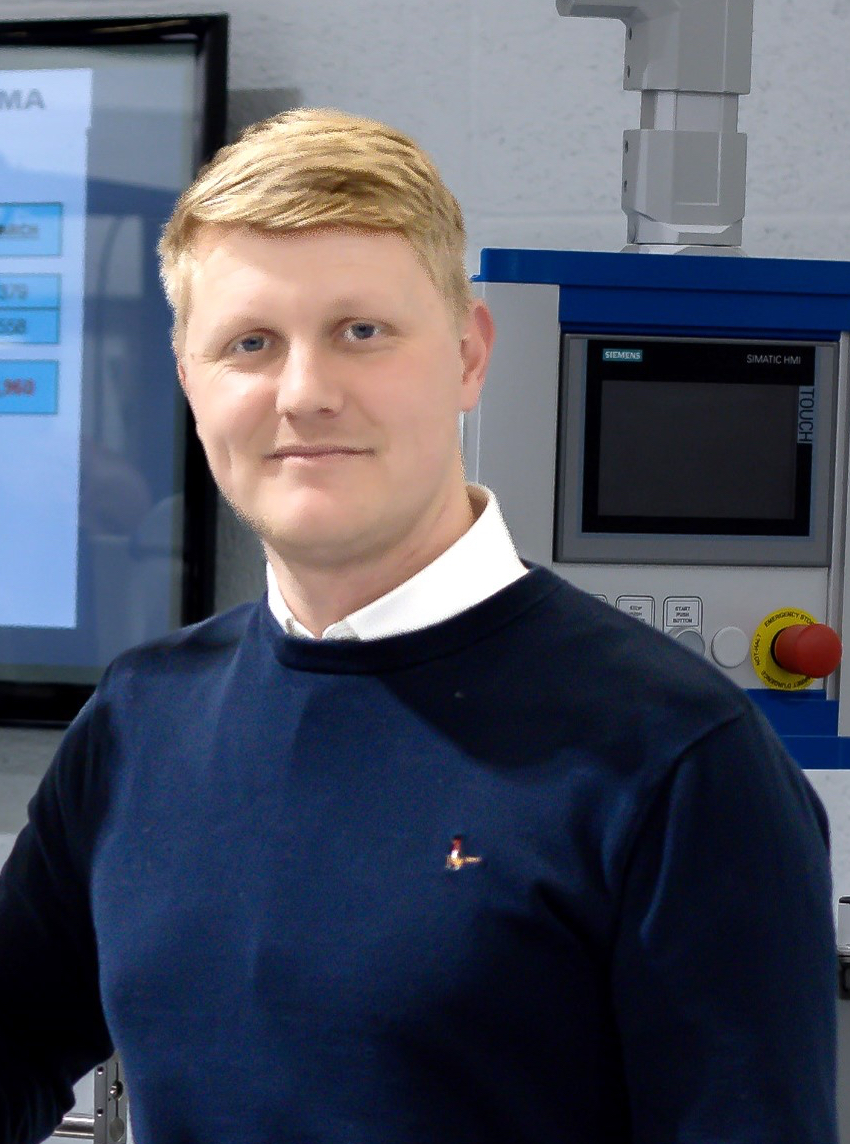The pharmaceutical industry is one of the most regulated environments in the world, with no room for error available in development or manufacturing protocols. Pharma packaging and labelling is no exception to this rule and ensuring that the correct labels are accurately placed on the appropriate products is highly important for any commercial operation in this industry.
Medicinal packaging can come in many shapes and sizes, which can lead to hurdles when automating the labelling process. A British company that supplies technology for labelling, labels and self-adhesives to a global audience has found a solution to this challenge.
To find out more, Annabel Kartal-Allen spoke to Gary Hopkins, Robotic Specialist at HERMA.
How it works
To allow pharmaceutical companies to optimise their labelling procedures, HERMA has developed a robotic element to its product line. Gary explains: “There is a precision robotic element in the labelling station, which rotates the cylindrical and dimensionally stable products horizontally between a motorised roller and the peel plate with an associated application roller.”
“The label is dispensed onto the rotating product and placed in the correct position by the application roller. For both height and spiral alignment, the tolerance is no more than ±1 mm. Once the label has been applied, the labelled products are removed by the robot.”
The labelling station can also be adjusted to fit individual specifications, with features such as a printer for variable data and codes as well as a camera for print and code verification that’s fully compatible with the devices HERMA supplies.
Although the incorporation of robotics into the labelling process is usually more accurate than a manual procedure, things can occasionally malfunction. HERMA has accounted for such instances in its design: “We have developed the option to include a robot that can effectively remove bad labels, which prevents any wastage that may occur owing to incorrect labelling.”
The technology also enables manufacturers to use labels with a range of dimensions by offering quick-change units, which can be switched at any time and without long changeovers.
The use of robotics is all about optimising the overall effectiveness of the equipment you’re using
Improving efficiency
Automation can be useful for pharmaceutical manufacturers in several ways, but Hopkins stresses that its main purpose lies in enhancing the efficiency of the labelling process: “The use of robotics is all about optimising the overall effectiveness of the equipment you’re using. This can be measured by key performance indicators, such as minimised downtime, improved product quality, a reduction in the manual handling of products and a decrease in labelling errors.”
Robots — unlike traditional product handling solutions — offer the benefit of being able to manipulate and position products in a packaging machine in a relatively small footprint.
How robotics can reduce costs
Not only does the use of robotics optimise the packaging process, but it also helps to lower production costs. “Using robotics certainly helps to save money. However, the extent to which this is possible depends very much on the individual case and on the products involved,” says Gary.
He adds: “In the pharmaceutical industry, we often deal with very high value products. Product recalls owing to incorrect labelling can be expensive … and that’s not even considering the damage to the company’s image. The extent to which costs can be reduced always depends on whether and what amount of manual work can be replaced by robotics.”
“Implementing robots into the process frees employees up for higher-value and/or more demanding tasks whilst removing the issue of finding a sufficiently qualified labour force to complete the job to a high standard. For some companies, using these technologies may not be about cutting costs as opposed to keeping operations running — even when staff shortages become an issue.” 
Gary Hopkins, Robotic Specialist at HERMA
Utilising robotics for improved accuracy
As well as keeping the cashflow intact, robotics could offer manufacturers enhanced accuracy: “In our experience, when errors occur in the packaging and labelling process, they are largely caused by people. There are many reasons why this may occur and the monotony of the job during prolonged periods can affect concentration. Because of this, the risk of errors then increases
exponentially. Robots, by contrast, can perform monotonous tasks perfectly with a high level of consistency, even for very long periods of time.”
"Reducing the prevalence of errors in the production line results in an overall decrease in costs associated with wastage, as well as the labour expense of fixing any issues associated with incorrect labelling."
The future of robotics in labelling
Hopkins believes there is a strong future for robotics in the pharmaceutical industry and has been working with the team at HERMA to bring this technology to more commercial manufacturing lines: “Robotics presents completely new possibilities for efficient product handling in the packaging and labelling process, especially when discussing products that are unstable or irregularly shaped."
"I am certain that we are only at the beginning of the development journey with this type of technology, as it results in real added value for customers. With our ongoing experience related to integrating this solution, we only plan to enhance the capabilities of robotics in this process.”
